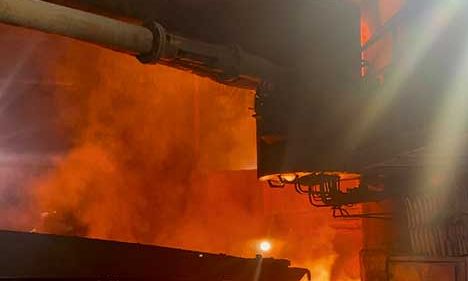Steely determination: the Jindal’s factory at Vijayanagar
Photo: Kabir Jhala
Entering Vijayanagar is like leaving India. This small town in the country’s south has no litter, its well-maintained roads are shaded by perfectly pruned trees and the buses run like clockwork. This is because it is owned by the Jindals, a steel tycoon family worth $22bn, whose enormous plant lies on its outskirts. Besides the factories, they run the roads, the hotels, the shops, the small airport, the J-Max cinema (yes, like IMAX) and now, an artist residency. Hampi Art Labs, named after the archaeological site Hampi, a 50-minute drive away, is located in a riverine building designed by prominent Mumbai architect Sameep Padora. It contains five state-of-the-art studios, plus residences and an exhibition space. Facilities of this calibre are quite unprecedented in India, but what is most exciting about the space is not its expensive ceramics kiln or 3D printers, but the potential it has to bring artists face to face with a conversation around materials and labour—via the Jindal’s steel plant. I toured it one evening—hard hat and all—and was awestruck in a way I rarely am in an art space. Much of what we wish to imbue into our exhibitions—drama, vast scale, alchemy—is found in the process of melting iron ore, cooling it and then pressing it into enormous metal coils. Suddenly, all those artists who make work about industry and its decline, from Mike Nelson and Bernar Venet to Richard Serra and Subodh Gupta, seemed to make more sense. Having an artist residency next to a huge steel plant might seem unappealing, especially with the rise of eco-residences in the middle of forests and by the seaside. But we are all using the same materials, engaging in exchanges of labour and, for the most part, belong to the same supply chains. If Hampi Art Labs is smart, it will encourage a genuine and transparent conversation around how art fits into this system. What’s more, it might begin showing work in the factory itself. A 50-ft chain dangling from a crane was redolent of work by Monica Bonvicini. I look forward to seeing what will be achieved.

